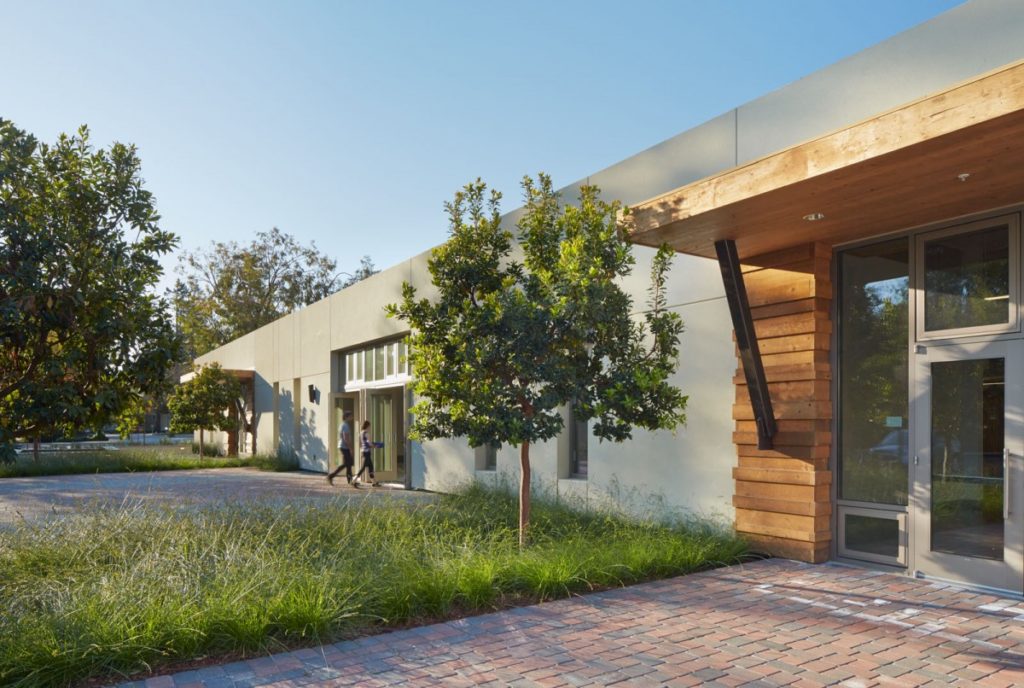With buildings accounting for up to 75% of carbon emissions in U.S. cities, addressing carbon emissions from the built environment is essential to meet the goals of the Paris Agreement and limit the rise in global average temperature to below 1.5 degrees C°. New construction represents just 1%-3% of building stock in any given year, making it clear to cities with climate action goals that they must find policy solutions that address the energy and carbon emissions of both new and existing buildings if they are going to make progress.
Jurisdictions are starting to pass laws requiring action in existing buildings. These jurisdictions include Washington, D.C.; New York City; St. Louis; and Washington State. New Buildings Institute (NBI) is working with an increasing number of cities and states to develop mandatory policies for improving the energy performance of existing buildings. Numerous factors are leading them in this direction, including the greening of the U.S. electricity grid, the looming timelines of many cities’ and states’ climate action goals, and interest in a proposed national green stimulus bill in the wake of the coronavirus pandemic. These pressures could create a tipping point for mandatory policies and ordinances regulating the energy performance and carbon emissions of existing buildings—and based on our work with jurisdictions Building Performance Standards provide a powerful solution.
These pressures could create a tipping point for mandatory policies and ordinances regulating the energy performance and carbon emissions of existing buildings—and based on our work with jurisdictions Building Performance Standards provide a powerful solution.
The case for addressing existing buildings
By requiring buildings to be more energy efficient, cities could cut about 30% of all urban emissions by 2050, according to a September 2019 report by Coalition for Urban Transitions. In many cities where we work, there is an increasing focus on aligning climate goals with public health and equity goals. Recent studies, including one from Rocky Mountain Institute, have sparked growing concern over the impact of natural gas combustion and health, raising calls for electrification of buildings. In addition to the operational energy- and carbon-saving benefits from efficiency retrofits in existing buildings, it’s worth noting the high levels of embodied carbon that could be saved (mainly in steel, concrete, and windows) by reusing and improving existing buildings rather than demolishing and rebuilding.
A shift from voluntary programs to mandatory policies
When it comes to existing buildings, the vast majority of cities have relied on voluntary benchmarking and transparency programs to incentivize owner investments in energy efficiency retrofits. These programs may have started moving the needle in some markets, but alone they are not enough to meet the goals of the Paris Climate Agreement. Local leaders actually have several policy options when determining how to address the energy use of existing buildings: transparency policies (benchmarking, building labeling, disclosure), mandatory updates (periodic, prescriptive or transactional), and building performance standards. NBI is working with jurisdictions across the country to help them understand the energy and carbon savings potential of these types of policies in order to meet their climate goals. In addition, current model energy codes such as the International Energy Conservation Code (IECC) provide some rules about efficiency levels in existing buildings, but are only focused on “what you touch,” during a renovation project doing little to push building owners to make more substantial improvements.

Transparency Policies
These policies require owners of certain types of buildings (typically public and large privately owned commercial and multifamily buildings) to report energy use to the overseeing government agency annually. This information can lead to increased market value for energy-efficient buildings, more deep energy retrofits, and a consistent way to measure energy use and carbon emissions from the building sector. Having access to building energy use data also helps building owners realize opportunities for improvement and make smart investments in their properties.
The state of California and 26 major U.S. cities have passed legislation mandating that owners of public, commercial, and multifamily buildings benchmark their properties. In many places, benchmarking laws are bolstered by labeling laws, which requires energy use disclosure at the time of sale or time of lease. Such a requirement will help businesses and consumers take actual energy costs into account when buying or renting property. Building labeling laws are fairly new, but policymakers expect them to drive interest in more energy-efficient properties, thereby leading some people to make energy upgrades prior to renting or selling their buildings.
Mandatory Updates
Mandatory Update policies require owners to complete some energy upgrades at the time of a “triggering” event. Triggering events can be periodic, prescriptive, or transactional and include:
- Periodic. Typically connected to a yearly or multi-year cycle. Mandates like re-tuning or retro commissioning, which have most often been set on a five-year cycle, are periodic policies.
- Prescriptive. This type of law sets minimum standards for technology-specific building features, such as lighting and heating/cooling systems, and requires that those features be upgraded. For example, one of the requirements of New York City’s Local Law 88 (later expanded by Local Laws 132 &134) requires that all lighting systems include controls.
- Transactional. Connected to real estate transactions such as sale, lease, financing, or property assessment. Many jurisdictions require a rental license before residential units, or even commercial space, can be offered for lease, which can be linked to energy upgrades through policy.
These policies will put jurisdictions on a path to high efficiency in existing buildings, but there is another way that can produce continued improvement and savings.

Building Performance Standards (BPS)
A building performance standard is a forward-thinking policy commitment in which a city or state establishes a long-term, high-performance standard, with interim targets that ratchet up over time. The combination of short- and long-term goals assures that building performance improves consistently over time and sends appropriate market signals to encourage investments in long-lived, efficient, and environmentally friendly technologies. Throughout these interim performance improvement cycles, cities will be collecting data and working with the private sector, utilities, and others to create incentive programs and provide technical assistance.
This type of standard can address all aspects of high-performance buildings simultaneously, including carbon reduction, building electrification, energy efficiency and peak demand reduction through load shifting and storage. A broadly written BPS could even address resiliency and water use. If successfully implemented, it would transform a city’s buildings from environmental liabilities to environmental assets.
One state and three major cities have passed BPS legislation requiring owners of large commercial and multifamily buildings achieve performance targets. However, by working in many jurisdictions where support for these standards is growing, NBI has seen BPS policies rapidly evolving beyond the initial aspects of energy and carbon reductions only.
In the second blog of this three-part series, we will take a deeper dive into BPS covering the key considerations jurisdictions should make when developing these standards, the framework and terminology, and some key challenges to overcome. To wrap up the series, we will look at the national discussion on job and economic opportunities in reducing carbon emissions from the building sector.
by Kim Cheslak, Associate Director of Codes and Policy
Bio
